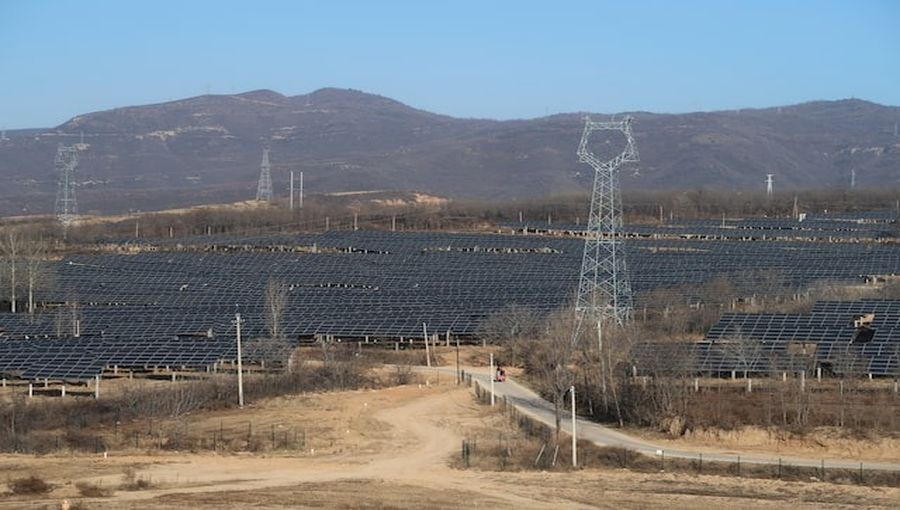Overview:
China’s industry ministry convened a meeting with solar industry representatives on August 18, 2025, marking the second such gathering in two months, to address the critical issue of overcapacity in the solar sector. The ministry urged the industry to strengthen regulations, reduce excessive competition, and curb overcapacity to foster a healthier and more sustainable development trajectory for the sector.Key Points:Overcapacity Crisis:China’s solar industry is grappling with significant overcapacity, producing approximately twice the global demand for solar panels. This surplus has led to a vicious price war, driving down prices and profitability.
Analysts estimate that 20-30% or more of manufacturing capacity needs to be eliminated to restore profitability to the sector.
Government’s Response:The ministry emphasized curbing “low-price disorderly competition” to stabilize the market. This follows a July 2025 meeting where authorities advocated for the “orderly exit of outdated production capacity.” A late July Politburo meeting, which sets China’s economic direction, heightened expectations for a broader government campaign against deflation, with the solar sector as a key focus. The ministry’s actions signal a shift toward stricter oversight, with further meetings planned for August 20 and 21, 2025, to discuss measures targeting overcapacity in solar cells, modules, silicon wafers, and polysilicon segments.
Proposed Industry Actions:Chinese polysilicon producers, a critical component of solar panel production, are discussing a 50 billion yuan ($7 billion) fund to acquire and shut down about one-third of production capacity (approximately 1 million metric tons of lower-quality polysilicon capacity). This initiative, led by major players like GCL Technology Holdings and Tongwei, aims to restructure the loss-making sector and form a cartel-like structure to stabilize prices by controlling supply.
The plan involves major producers pooling resources to buy out inefficient facilities, reduce output, and halt price wars. Rising polysilicon prices would force solar panel manufacturers to consolidate, addressing the sector’s overcapacity.
Challenges and Risks:Despite the sector having fewer players and simpler supply chains compared to other industries, implementing the crackdown faces hurdles. Local governments, which have supported the solar industry with subsidies, tax breaks, and cheap land to meet Beijing’s green energy goals, may resist closures due to economic and employment concerns.
Analysts warn that even if a cartel forms, success could be undermined if members increase output to capitalize on rising prices, potentially reigniting price wars.
The sector’s financial strain is evident, with major producers like Longi Green Energy reporting losses of at least $660 million in the first half of 2024 due to supply-demand imbalances. The industry as a whole lost $60 billion in 2024, with photovoltaic manufacturing losses reaching $40 billion.
Market and Global Context:China dominates the global solar supply chain, producing 95% of solar-grade polysilicon and over 80% of cells, modules, and wafers in 2024. This dominance has fueled trade tensions, particularly with the U.S. and Europe, where tariffs have been imposed to counter low-cost Chinese exports.
Domestic demand in China is expected to drop sharply in the second half of 2025 due to pricing reforms removing guaranteed pricing, though annual installations are still projected to hit a record high due to earlier frontloading.
The overcapacity issue has led to significant layoffs, with major solar firms shedding nearly one-third of their workforce (approximately 87,000 jobs) in 2024, highlighting the sector’s economic and social challenges.
Broader Implications:The polysilicon sector is seen as a litmus test for China’s broader efforts to address overcapacity across industries like electric vehicles and steel. Failure to succeed here could signal difficulties in implementing reforms in more complex sectors.
Beijing’s “anti-involution” program aims to combat deflationary price wars, but analysts caution that mergers and acquisitions alone may not suffice, and defaults or significant capacity reductions may be necessary.
Conclusion:
China’s solar industry is at a critical juncture, with the government pushing for regulatory measures and industry-led initiatives to address overcapacity and stabilize the market. While plans like the $7 billion polysilicon fund and calls for industry consolidation show proactive steps, challenges such as local government resistance, financial losses, and potential cartel instability pose significant risks. The outcome of these efforts will have implications not only for China’s solar sector but also for its broader economic strategy and global trade relations.

